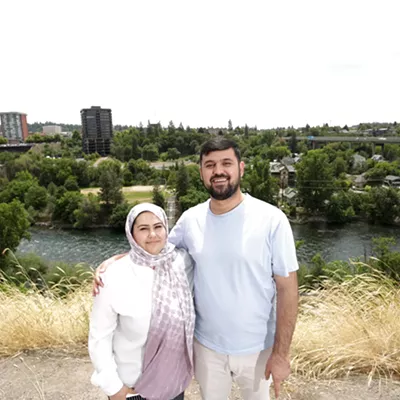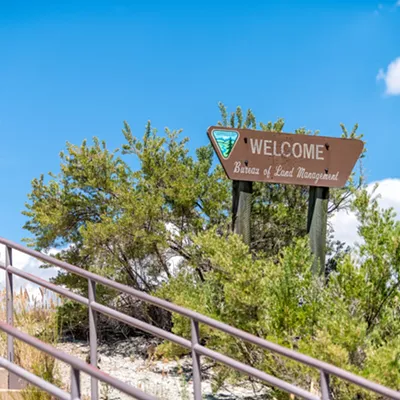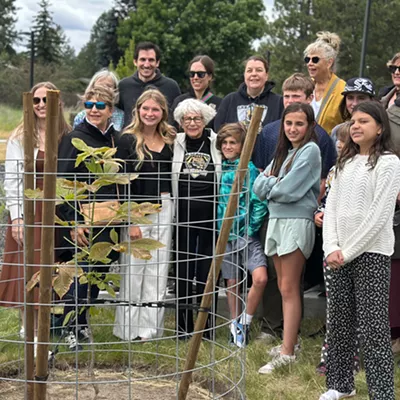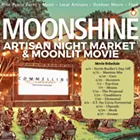Back then, the fur companies set the date and place, and at the appointed time, trappers would converge on places like Pierre's Hole, Idaho; Sweet Lake, Utah; and a smattering of places on the Green River in Wyoming. These were not small jamborees of a few dozen trappers. Favored settings were wide, lush valleys big enough for 500 mountain men and several thousand Indians -- Shoshone, Crow, Nez Perce and Flathead among them -- to camp and graze and obtain water for thousands of horses. And the supply trains had to be able to get there easily. Usually held in early July, a rendezvous could last from a few days to a couple of weeks. The fur companies bought pelts from the trappers; the men bought or bartered everything they would need for the coming year. At their leisure, mountain men traded news, visited friends, drank, played and fought.
Absurd as it may seem, the American mountain man hazarded difficult terrain, dangerous animals and, occasionally, hostile Indians -- all in the furtherance of a fashion statement. The beaver top hat was a must-have for the well-dressed 19th-century gentlemen on both sides of the Atlantic, even more than Jimmy Choo sandals or a Prada bag might be to the 21st-century fashionista. Until beaver was supplanted by silk, mountain men canvassed the Rocky Mountain country, trapping the animals by the thousands and beginning the displacement of Indian tribes that the legions of settlers who came after them would complete. Though the Rocky Mountain fur trade flourished for only about 30 years (roughly from 1810-40), in their pursuit of beaver pelts the trappers helped explore the Mountain West and secure the boundaries of the young American nation.
Tony Roberts of Mountain Top Trading Company in Colfax got involved with rendezvous back in 1988 through his son and daughter, who had been learning how to shoot muzzleloaders at the events. Mountain Top came about because the family was "looking to get our basic gear," Roberts says, but all that was offered at a rendezvous back then were pricey $250 knives and not-so-essential items like painted buffalo skulls. So they started making their own stuff and selling a few things to others at rendezvous.
Rendezvous are family events these days, Roberts says. There is always kid-friendly fun, including scavenger hunts, crafts, tomahawk and knife throwing, along with bow and arrow competitions. Roberts recalls a boy -- "a little bitty guy, about as tall as an end table" -- who was amazing with a bow and arrow. Roberts' own 10-year-old granddaughter is quite handy with a longbow. She loves to chase squirrels around -- though no kills so far, he is quick to add. She says she's not good enough yet, but Grandpa insists she'll compete some day soon.
In addition to the weaponry skills competitions, other typical rendezvous events include Dutch oven cook-offs, blacksmithing, fire-starting competitions, demonstrations of how to raise tepees and wall tents, and primitive skills like beadwork and tanning leather by hand.
Nowadays, women participate more and more -- although Roberts jokes that some mountain men discourage their wives from coming "because they don't like getting beat" in the competitions. Historically, the mountain man may have been a rugged individual, but he was usually not alone. More often than not, he was accompanied by his wife. Based on biographical sketches of mountain men, historians have estimated that more than 80 percent were married and traveled with their wives as they roamed the Rocky Mountains. These women -- American, Mexican and Indian -- helped with both the trapping and the preparation of furs, as well as caring for their children, who also came along.
In fact, the fur trapper community was notable for its multi-ethnic character. Not only did white trappers marry Indian women, but fur companies engaged many Indians as trappers, and they outnumbered the mountain men by far at the rendezvous. Yet Indian people are conspicuous by their absence at present-day rendezvous. Roberts says powwows and other Indian cultural gatherings draw tribes and that their lack of participation in rendezvous is "just how things are." The arrival of the mountain men, after all, spelled the beginning of the end for native peoples' way of life.
Still, for Roberts and his fellow enthusiasts, the lure of the mountain man rendezvous is "the chance to go back and learn skills that were everyday skills" in those days. This weekend's event at Cataldo affords the opportunity to see mountain men at play.
Mountain Men will rendezvous on Friday-Sunday, Aug. 19-21, from 9 am-5 pm. Free ($4 parking). Old Mission State Park, Cataldo, Idaho. Call (208) 682-3814















